 W
WAglae is a genus of euglossine bees, with the only described species Aglae caerulea. Like all orchid bees, it is restricted to the Neotropics.
 W
WAtta cephalotes is a species of leafcutter ant in the tribe Attini. A single colony of ants can contain up to 5 million members, and each colony has one queen that can live more than 15 years. The colony comprises different castes, known as "task partitioning", and each caste has a different job to do.
 W
WChoeradodis stalii is a species of praying mantis with common names that include tropical shield mantis, hooded mantis, and leaf mantis. It is found in Brazil, Ecuador, French Guiana, Panama, and Peru.
 W
WEufriesea flaviventris is a species of bee in the family Apidae, tribe Euglossini.
 W
WEufriesea surinamensis belongs to the tribe of euglossine bees and as such is a species of orchid bee. This should not be mistaken with the species group surinamensis, which includes Ef. surinamensis among other Eufriesea species.
 W
WEuglossa bazinga is a euglossine bee species found in Brazil. It is named after the catchphrase of the fictional character Dr. Sheldon Cooper from the television show The Big Bang Theory. It was previously misidentified as Euglossa ignita, and is threatened with habitat loss.
 W
WEuglossa cordata is a primitively eusocial orchid bee of the American tropics. The species is known for its green body color and ability to fly distances of over 50 km. Males mostly disperse and leave their home nests, while females have been observed to possess philopatric behavior. Because of this, sightings are rare and little is known about the species. However, it has been observed that adults who pollinate certain species of orchids will become intoxicated during the pollination.
 W
WHylomyrma balzani is an ant of the genus Hylomyrma native to Argentina, Brazil and Paraguay. It was described by Emery in 1894, where the first specimen of a worker was described.
 W
WLestrimelitta limao is a neotropical eusocial bee species found in Brazil and Panama and is part of the Apidae family. It is a species of stingless bees that practices obligate nest robbing. They have never been spotted foraging from flowers, an observation that supports their raiding behavior. Because of their lack of hind corbiculae, they must raid to obtain enough protein in their diet in the form of pollen and nectar. Lestrimelitta limao secrete a lemon-scented alarm allomone, from which they receive their name, in order to conduct successful raids. L. limao are hypothesized to produce poisonous honey that is toxic if consumed by humans. Because robber bees are so rare and difficult to observe, there is a limited scope of information available.
 W
WMelipona bicolor Lepeletier, 1836, commonly known as Guaraipo or Guarupu, is a eusocial bee found primarily in South America. It is an inhabitant of the Araucaria Forest and the Atlantic Rainforest, and is most commonly found from South to East Brazil, Bolivia, Argentina, and Paraguay. It prefers to nest close to the soil, in hollowed trunks or roots of trees. M. bicolor is a member of the tribe Meliponini, and is therefore a stingless bee. This species is unique among the stingless bees species because it is polygynous, which is rare for eusocial bees.
 W
WMelipona capixaba, commonly known as uruçu negra, is a species of eusocial stingless bees of the order Hymenoptera. It is endemic in the mountainous region of the State of Espirito Santo, Brazil, and it has been included since 2003 on the list of threatened species produced by the Brazilian Ministry of the Environment; the only eusocial insect on this list.
 W
WMelipona quadrifasciata is a species of eusocial, stingless bee of the order Hymenoptera. It is native to the southeastern coastal states of Brazil where it is more commonly known as Mandaçaia, which means "beautiful guard," as there is always a bee at the narrow entrance of the nest. M. quadrifasciata constructs mud hives in the hollows of trees to create thin passages that only allow one bee to pass at a time. Because they are stingless bees, M. quadrifasciata is often used as pollinators in greenhouses, outperforming honey bees in efficiency and leading to overall larger yields of fruits that were heavier, larger, and contained more seeds.
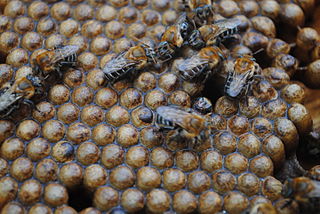 W
WMelipona scutellaris is a eusocial stingless bee species of the order Hymenoptera and the genus Melipona. It is considered to be the reared Melipona species with the largest distribution in the North and Northeast regions of Brazil, with records from Rio Grande do Norte down to Bahia. Its common name, Uruçu, comes from the Tupi "eiru su", which in this indigenous language means "big bee". Their honey is highly desirable and the materials they create for nests have been proven to be a promising source of antibiofilm agents and to present selectivity against human cancer cell lines at low concentrations compared to normal cells.
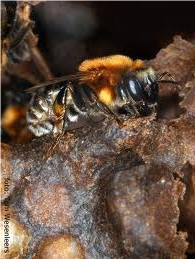 W
WMelipona subnitida is a neotropical bee species in the Apidae family found in the dry areas of Northeastern Brazil. This species of stingless bees practices single mating, monogynous habits.
 W
WMonachidium lunum is a species of grasshoppers belonging to the family Acrididae.
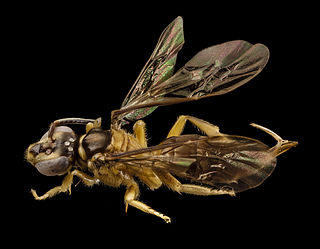 W
WThe cleptoparasitic bee genus Osiris is a rare group of apid bees from the Neotropics, that lay their eggs in the nests of bees in the related tribe Tapinotaspidini, such as Paratetrapedia. Most of the known species are pale yellowish, smooth and shining, and very wasp-like in appearance.
 W
WParatrigona subnuda, commonly known as "Earth Jataí or “No-Brightness,” is a species of eusocial stingless bee in the family Apidae and tribe Meliponini. These social bees are prevalent in Neotropical moist forests, including Brazilian Atlantic and other South American forests. They inhabit spherical nests in moist underground environments with their forest habitats. Within their Neotropical habitats the P. subnuda is considered to be a very successful and common species of bee. P. subnuda’s main source of food is pollen and nectar from a large variety of native Mesoamerican tropical plants. They have been extensively studied due to social conflicts arising from single mate behaviors and particular virgin behaviors. P. subnuda also exhibits the particular daily behavior in which they open the nest entrance at dawn and close the entrance at dusk when all their activities are done.
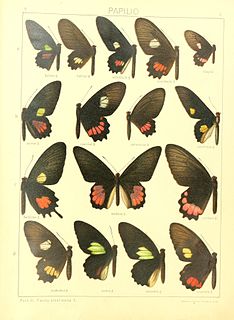 W
WParides klagesi is a species of butterfly in the family Papilionidae. It was thought to be endemic to Venezuela before being discovered in Brazil. A recent, freely available article by Olaf Mielke and Mirna Casagrande (2007) summarizes the known geographical distribution of the species. Because of the prior CITES listing and apparent rarity, this species was placed in the endangered species list for the northern Brazilian state of Pará.
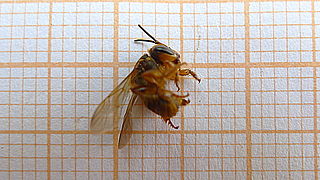 W
WScaptotrigona postica is a species of stingless bee that lives mainly in Brazil. It is a eusocial bee in the tribe Meliponini. S. postica is one of 25 species in the genus Scaptotrigona and is a critical pollinator of the tropical rain forests of Brazil. They construct their nests in hollowed sections of tree trunks, allowing for effective guarding at the nest entrance. This species shows colony structure similar to most members of the Meliponini tribe with three roles within the colony: queen, worker, and male. S. postica individuals have different forms of communication from cuticular hydrocarbons to pheromones and scent trails. Communication is especially useful during worker foraging for nectar and pollen through the Brazilian tropical rain forests. S. postica is a very important pollinator of the Brazilian tropical rain forests and is widely appreciated for its honey. Stingless bees account for approximately 30% of all pollination of the Brazilian Caatinga and Pantanal ecosystems and up to 90% of the pollination for many species of the Brazilian Atlantic Forest and the Amazon.
 W
WSchwarziana quadripunctata is a small, stingless bee found in a stretch of the South American Amazon from Goiás, Brazil, through Paraguay, to Misiones, Argentina. This highly eusocial insect constructs earthen nests in the subterranean level of the subtropical environment, an unusual feature among other stingless bees. The species ranges in sizes from 6.0 to 7.5 millimeters and feeds on a diverse diet of flowering plants found abundantly on the forest floor, including guacatonga and the mistletoe species Struthanthus concinnus.
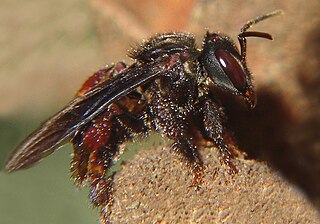 W
WTrigona spinipes is a species of stingless bee. It occurs in Brazil, where it is called arapuá, aripuá, irapuá, japurá or abelha-cachorro ("dog-bee"). The species name means "spiny feet" in Latin. Trigona spinipes builds its nest on trees, out of mud, resin, wax, and assorted debris, including dung. Therefore, its honey is not fit for consumption, even though it is reputed to be of good quality by itself, and is used in folk medicine. Colonies may have from 5,000 to over 100,000 workers.